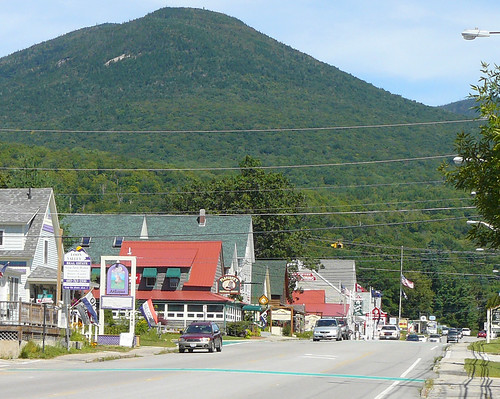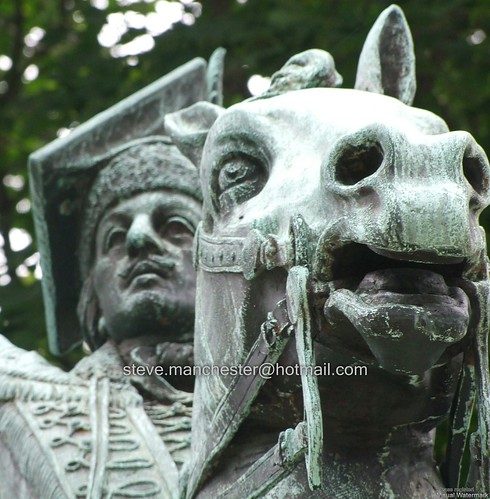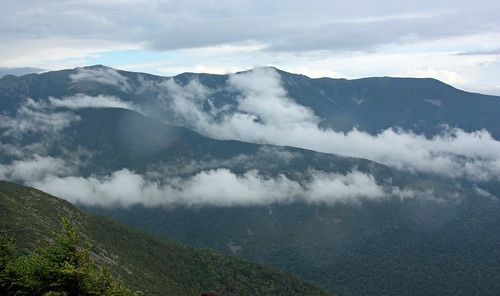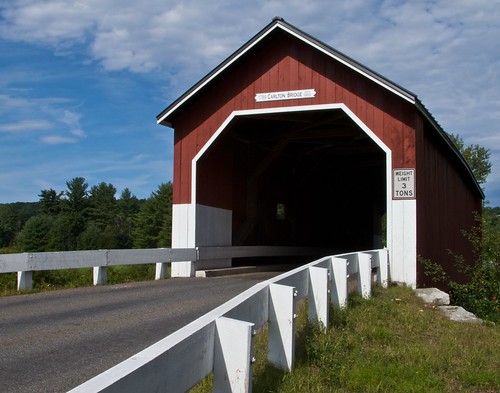Photos taken in and around the state of New Hampshire
from the NH Flickr Group.
Come move with us to our new domain!
nhphototour.com
Monday, August 31, 2009
Sunday, August 30, 2009
Lincoln, New Hampshire

The Town of Lincoln New Hampshire, located in the White Mountains, was once a paper mill town. After the mill shut down in 1979 the town reestablished itself as a tourist destination.
The flag in the center is flying at half staff in memory of Senator Edward M Kennedy of Massachusetts who had died the previous day.
Brigadier General Casimir Pulaski (1745-1779)

Father of the American Calvary
Casimir Pulaski, son of Count Joseph Pulaski, was born in Warsaw, Poland, on March 6, 1745. At the age of fifteen, he joined his father and other members of the Polish nobility in opposing the Russian and Prussian interference in Polish affairs. Outlawed by Russia for his actions on behalf of Polish liberty, he traveled to Paris where he met Benjamin Franklin, who induced him to support the colonies against England in the American Revolution. Pulaski, impressed with the ideals of a new nation struggling to be free, volunteered his services. Franklin wrote to George Washington describing the young Pole as "an officer renowned throughout Europe for the courage and bravery he displayed in defense of his country's freedom."
In 1777, Pulaski arrived in Philadelphia where he met General Washington, Commander-in-Chief of the Continental Army. Later, at Brandywine, he came to the aid of Washington's forces and distinguished himself as a brilliant military tactician. For his efforts, Congress appointed him Brigadier-General in charge of Four Horse Brigades. Then again, at the Battle of Germantown, Pulaski's knowledge of warfare assisted General Washington and his men in securing victory for American forces.
Later in 1773, through Washington's intervention, Congress approved the establishment of the Cavalry and put Pulaski at its head. Pulaski, who became known as the "Father of the American Cavalry," demanded much of his men and trained them in tried and tested cavalry tactics, many of which he used in his fight for freedom in Poland. Pulaski often used his own personal finances, when allocations from Congress were scarce, in order to assure his forces of the finest equipment and personal safety.
Pulaski and his Legion were then ordered to defend Little Egg Harbor in New Jersey and Minisink on the Delaware; they then proceeded south to Charleston, South Carolina. It was on October 9, 1779, during the Battle of Savannah, that General Pulaski, charging into battle on horseback, fell to the ground mortally wounded by the blast of a cannon. Pulaski's enemies were so impressed with his courage, that they spared him the musket and permitted him to be carried from the battlefield. Pulaski died several days later on October 15, 1779, at age 34. The Pulaski Monument, erected in his honor, is located in Monterey Square, Savannah, Georgia.
Saturday, August 29, 2009
Friday, August 28, 2009
'M' is for Madison.

She did this on the summit out of sheer excitement.
Harrisville Pond

The Harrisville Library is located at the edge of the Pond. Harrisville, NH.
Ordination Rock
Here's some history on the rock:
In 1792, fresh from Dartmouth College, young Samuel Hidden was ordained as minister of Tamworth atop a two-story glacial rock that would fill a large living room. Hidden was a progressive, a musician, and a fan of the arts. In his 40 years in Tamworth the congregation swelled from a dozen to over 300 members. The symbolism of the rock (the nickname Jesus gave to his disciple Peter who launched the Christian church) and the dramatic ceremony were not lost on the Tamworth villagers. In the mid-1800s, a white marble obelisk was built on top of the rock that is now reinforced with giant iron staples. Visitors climb a crude moss-covered stone stairway to read the inscription at the top. Rev. Hidden, whose descendants still live in Tamworth, is buried just up the hill from Ordination Rock. Balanced loosely on six granite legs, his tombstone looks more like a kitchen table than a grave.
Thursday, August 27, 2009
Wednesday, August 26, 2009
Clouds between the mountains

We rode the tramway to the top of Cannon Mountain at Franconia Notch State Park in northern New Hampshire. As you can see, it was a cloudy day but it was fantastic to see the clouds both above and below us.
Monday, August 24, 2009
Benson's Animal Farm
From Wikipedia
The zoo was founded by John Benson in 1924 as an animal-training center, and was opened to the public in 1926 with animal exhibits, a miniature train, games and exhibits.
John Benson's career started at Lexington Park in Lexington, Massachusetts in the late 1800s. Although he was not the owner, he ran the amusement park, which was filled with all sorts of exotic animals, a theater, a women's resting building and other facilities. The women's resting house remains and is now a home. At the time trolleys took Bostonians from Massachusetts Avenue to Bedford Street and dropped them off at the park's entrance, located on the Lexington and Bedford town line. The park finally closed in 1921.
Benson then went to New Hampshire to open his own animal park. After opening to the public in 1926, Benson's was expanded in 1932-33 with the addition of a permanent Wild Animal Circus. A special "Jungle Train" ran from Boston to Hudson on Sundays, with admission to Benson's included in the ticket price. By 1934 the parking lot could accommodate 5,200 cars. In 1940 animal trainer Joe Arcaris began his association with the zoo, performing acts with lions and other animals till the late 1970s.
Benson died in 1943, and Boston Garden Corp. bought the property the next year. The park was closed to the public during WWII, and re-opened in 1945. Starting in the 1960s, it went into a period of decline in maintenance and attendance. It was sold in 1979 to Arthur Provencher, who reversed its decline for a while with an influx of money. Although many people tried to convince Arthur to develop the property into a large paved amusement park, he was determined to preserve its status as an animal farm, with its primary focus being the animals, and not amusement rides. His main interest was always the beauty of the animals, which had inspired him for most of his life. However, the farm remained unprofitable.
Toward the end of its existence as a zoo, it had a wide variety of animals, including trained lions, bears of several different species, llamas, a gorilla, elephants, monkeys, and many kinds of birds. With declining finances in the 1980s, the park added features to add family interest. After an unsuccessful association with outside investors, Provencher filed Chapter 11 bankruptcy in 1985. In 1987, in a final effort to save the park, he changed it to an amusement park, whose full name was "New England's Playworld Amusement Park and Zoo," notable for a huge statue of Mighty Mouse. This change failed to stem the decline, and the park went out of business at the end of the 1987 season.
Since 2001 there have been efforts by local people to restore the grounds as a park.
Benson's Animal Farm






